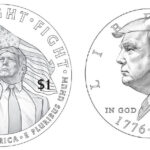How Donald Trump won the 2024 presidential election, after exhaustive evaluations by pundits, pollsters and political scientists, remains an enigma. I read all the number-crunching explanations I could Google. The Pew Research quantitative analysis of the election results was the most illuminating.
Among the statistical conclusions of the Pew analysis:
- Trump won the 2024 election with a voter coalition that was more racially and ethnically diverse than in 2020 or 2016. Trump won 15% of Black voters — up from 8% four years earlier. Among Hispanic voters, Trump battled to near parity in 2024 (51% Harris, 48% Trump) after losing to Joe Biden 61% to 36% in 2020.
- Naturalized citizens — immigrants who hold U.S. citizenship — who voted in the election split their votes about evenly, with 51% voting for Harris and 47% for Trump. In 2020, naturalized citizens favored Biden by 21 percentage points: 59% to 38%. Other studies added Trump’s increase of support among Muslims.
- The rural-urban gap was wider in 2024 in Trump’s favor.
- Evangelical support remained overwhelmingly in favor of Trump. In 2016, Trump received 78% of evangelical votes. In 2020, he received 81% and in 2024, 83%.
- A larger share of those who did not turn out in 2020 but did in 2024 supported Trump (54%) than Harris (42%).
- Trump made gains among men — especially men under 50. Men favored Trump by 12 points (55% to 43%) after being closely divided in 2020. This is the manly man metaphor.
Trump’s dominant metaphors are an important part of understanding his appeal. He persuaded millions of Americans he was a truth-teller, an innocent man, the least racist person in the world, a respecter of women, an honest businessman, a lover of democracy and a strong, powerful leader. These are only a few of the persuasive triumphs of Trump in the 2024 election.
“Trump’s dominant metaphors are an important part of understanding his appeal.”
A word about metaphors
I believe the best explanations for the 2024 election result must consider the power of a group of emotionally charged metaphors. Metaphors create reality. They are not merely decorative stylistic ornaments but linguistic strategies designed to persuade people.
Trump, the media and marketing genius, gave Americans a series of metaphorical symbols that persuaded them to vote for him. His images operated like planets, in Kenneth Burke’s terms, “each with its own gravitational pull.”
His use of metaphors induced millions to vote for him. Jennifer Mercieca, communication scholar, calls him a “rhetorical genius.” Burke suggested metaphor plays a critical role “in the discovery and description of truth.” Metaphors are “truth” conduits, not mere decorations.
Nietzsche called truth an “army of metaphors.” Trump assembled his metaphors and sent them into battle and emerged victorious. Trump truth became official truth on Nov. 5, 2024.
Trump is now our president because of his ingenious ability to craft and repeat endlessly three deeply emotional metaphors. The purpose of this essay is to explicate Trump’s metaphors and explore the implications of the way his metaphors shaped the 2024 election results.
“Trump truth became official truth on Nov. 5, 2024.”
The dehumanizing metaphor
First is the dehumanization cluster comprising terms such as “hordes,” “scum,” “animals,” “poisoning the blood,” “rapists and murderers,” “migrant criminals,” “illegal monster,” “killers,” “gang members,” “poisoning our country,” “the largest invasion in the history of our country.”
Since his announcement of a run for the presidency in 2015, Trump has repeatedly cast immigrants as less than human. According to the Marshall Report, Trump has said:
- Unauthorized immigrants are criminals (said at least 575 times), eating pets, coming from jails and mental institutions (at least 560 times), causing crime in sanctuary cities (at least 185 times), and a group of isolated, tragic cases prove they are killing Americans en masse (at least 235 times).
- They are stealing Americans’ public benefits (at least 270 times) and jobs (at least 155 times).
Trump successfully plugged into the stubborn belief that progress for brown people (immigrants) would be achieved only at the expense of white people, African Americans, other immigrants and Muslim Americans. The zero-sum paradigm led 47% of naturalized citizens to vote for Trump.
The “immigrants are criminals and job thieves” metaphor seems the most likely motivator for this increase in support of Trump.
Trump’s dehumanizing rhetoric drifted toward Dr. Zaius of Planet of the Apes: “Humans are a menace. A walking pestilence.”
“Trump spreads dehumanization everywhere.”
Trump spreads dehumanization everywhere. He posted, “Happy Memorial Day to all, including the scum that spent the last four years trying to destroy our country through warped radical left minds.” He has called President Joe Biden and members of the Democratic leadership “scum.”
Trump’s dehumanizing metaphors have become literal truth for MAGA. They have spread across the entire spectrum of our land. His immigrant dehumanization project — at least 10 years in the making — convinced African Americans, Hispanics and Muslims to vote for him.

The ‘enemy’ metaphor
Vehicles in the enemy cluster include Democrats, liberals, socials, university professors, disloyal Republicans, lawyers, judges and members of the media. His attacks on Barack Obama, Bill Clinton, Joe Biden and Kamala Harris belong to this cluster.
One of Trump’s favorite metaphors is “the enemy within.”
Trump’s dominant metaphors belong to the genre of the apocalyptic. The apocalyptic signals a crisis, an impending catastrophe. Apocalyptic is a single, restorative, final battle with one permanent victor. Apocalyptic is the most anti-democratic of all ideologies. It is not a politics of deliberation, negotiation or compromise. It is a politics of demolition, destabilization and demagoguery.
Apocalyptic language is highly metaphorical, according to rhetorical scholar James Darsey. Evangelicals are enraptured by Trump’s intertwining of religious and political themes of a holy, chosen people in a Christian nation with a millennial mission and an innocent and persecuted people opposed to and overcoming the forces of evil.
“One of Trump’s favorite metaphors is ‘the enemy within.’”
Trump has successfully used apocalyptic rhetoric to convince voters they are in a battle for the soul of America, a battle between good and evil. In Trump’s repetitive rally speeches, America is losing the battle to evil. “We don’t have victories anymore,” he complained.
At his Scranton, Pa., rally Trump evoked apocalyptic language: “We’re running against something far bigger than Joe or Kamala and far more powerful than them, which is a massive, vicious, crooked, radical left machine that runs today’s Democrat Party. They’re just vessels. It’s just this amorphous group of people. But they’re smart and they’re vicious. And we have to defeat them.”
Trump successfully turned his enemies into a dark, degenerative, negative force — the source of all evil and the greatest threat to the continued existence of the United States. Some voters were not voting so much for Trump as voting against the “enemy” — the other party.

The ‘manly man’ metaphor
Trump engaged in a campaign of ostentatious masculine posturing. He performed political masculinity in his claims that God saved him from the assassin’s bullets. Evangelicals undergirded Trump’s manly man trope by preaching he was the “strong man of God.” Trump’s machismo and his paternalistic metaphors underscored his claim to be the toughest of all men. In contrast, Harris would be a laughingstock, and the other leaders of the world would treat her “like a toy.”
His simplistic but effective message: “America is not ready for a woman president.” The message sounds like those Baptist churches in the 1980s saying, “We believe God calls women, but our church is not ready for a woman pastor.”
Trump’s strongman act also included a bullying, threatening set of performances that portrayed him as a champion of the people.
“I will fight for you with every breath of my body,” Trump proclaimed. He promised to eradicate “radical Islamic terrorism” from the face of the earth, end the Russia-Ukraine war within 24 hours, and end the Israel-Hamas war immediately. He bragged of the necessity of violence: “You got to knock the hell out of them. Boom! Boom! Boom!”
“He projects the image of protecting America with his anger and macho rhetoric.”
He projects the image of protecting America with his anger and macho rhetoric. Trump believes his own rhetoric: “I am the only one who can save this nation.”
The photo of Trump’s bloody head and mane with his clenched fist and shouts of “Fight, fight, fight!” after the assassination attempt became the iconic, archetypal visual metaphor of Trump’s manliness. It fit seamlessly with his January 6 insurrection speech: “”If you don’t fight like hell, you’re not going to have a country anymore.” (He repeated the line four times). And the aroused crowd chanted, “Fight for Trump, fight for Trump, fight for Trump!”
Trump undergirds his manly man metaphor with a populist image as a transgressive, angry leader who ignores political correctness and wokeness and who is willing to blow up politics as usual. Americans from all walks of life seemed captured by Trump’s claim of “telling it like it is,” his bull in a china shop approach to diplomacy, his barroom, raunchy, profane language and his overall tough guy persona.
Trump successfully tapped into American’s cinematic mythology of the tough hero operating outside the lines of protocol and rules to destroy all enemies. Trump turns all he touches into Fight Club. And now he plans to have a mixed martial arts fight on the lawn of the White House.
His male-dominated and conservative set of ideas are designed to return America to a submissive female population and a superior cult of the male. Maybe Make America Great Again really means Make Men Great Again. Within this cluster of manly man metaphors there is also macho leadership, nativism, an appeal to authoritarian rule and a personality of no restraints.
Taking fiery darts
I am convinced Trump’s system of metaphorical concepts proved to be the winning margin in 2024. There was nothing in Trump truth that convinced his supporters he belonged in the Big House instead of the White House. His ability to get away with “everything” made him even more powerful and invulnerable.
His supporters loved his ability to take the fiery darts of the devil and emerge unscathed. Trump really did come across as a superhero. His digital trading card with him dressed as Superman is the best visual metaphor I have found to underscore how his supporters perceive him.
Trump’s fear and anger metaphors persuaded enough African Americans, Muslims, Hispanics and naturalized citizens to join MAGA in electing him to a second term. In this respect, Trump is a rhetorical genius.
The question MAGA and Trump must face: What comes after Trump? Will his apocalyptic acts of demolition and dismantlement continue unabated? Or will we discover new metaphors based on courage and joy instead of fear and anger?








